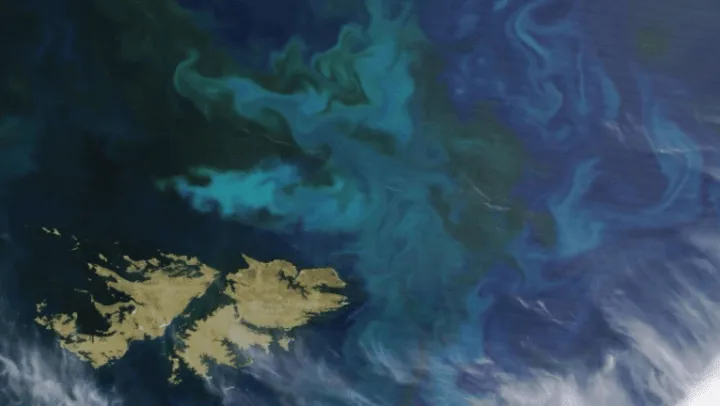The official account of the National Aeronautics and Space Administration (NASA) recently published an aerial image of the Falkland Islands, highlighting the formation of phytoplankton in the surrounding waters.
In addition to showcasing the characteristics and aspects of this natural phenomenon, NASA also provided geographical context by locating the islands on a world map. The publication specifically mentioned Argentina and Patagonia, emphasizing the regional significance of the event.
A Controversial Naming Issue
Initially, NASA referred to the islands by the name imposed by the United Kingdom. However, after some time, the agency edited the publication, a move that reignited discussions surrounding the sovereignty of the Falkland Islands.
The Science Behind the Bloom
NASA’s post also delved into the conditions that make the Patagonian Shelf an ideal environment for phytoplankton blooms. The agency shared a ‘secret formula’ that contributes to the phenomenon: airborne dust from the land, iron-rich currents, and deep ocean upwellings. This trio provides abundant nutrients, allowing these tiny aquatic organisms to thrive and paint the ocean in shades of green and blue.
During the spring and summer in the South Atlantic Ocean, phytoplankton flourish due to the long hours of sunlight. The different colors visible in the image represent a mixture of various phytoplankton communities, which change throughout the blooming season based on nutrient availability and environmental factors.
Satellite Observation and Image Description
Identifying the exact types of phytoplankton present in a bloom can be challenging using satellite imaging alone. However, thanks to NASA’s Terra satellite, researchers were able to capture this stunning image, providing valuable insights into the blooming process.
Image Description
The image is predominantly in shades of blue. The deep blue waters of the Argentine Sea serve as a backdrop, while swirls of light blue, turquoise, and green stretch across the ocean. On the left side of the image, a group of islands—the Falkland Islands (Islas Malvinas)—stands out in tan hues, contrasting with the vibrant colors of the ocean currents.
NASA’s captivating image not only highlights the beauty of natural marine phenomena but also inadvertently touches on a long-standing geopolitical dispute, reminding the world of the complexities surrounding the Falkland Islands.

